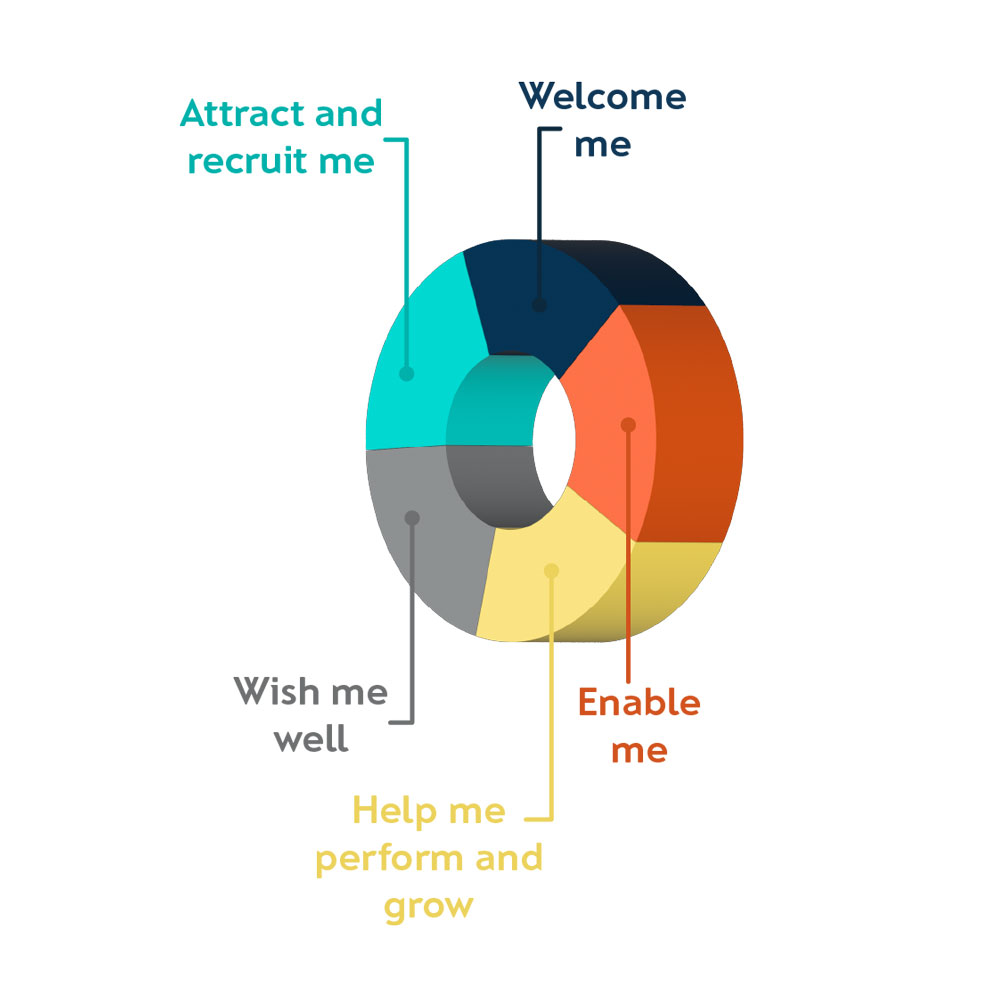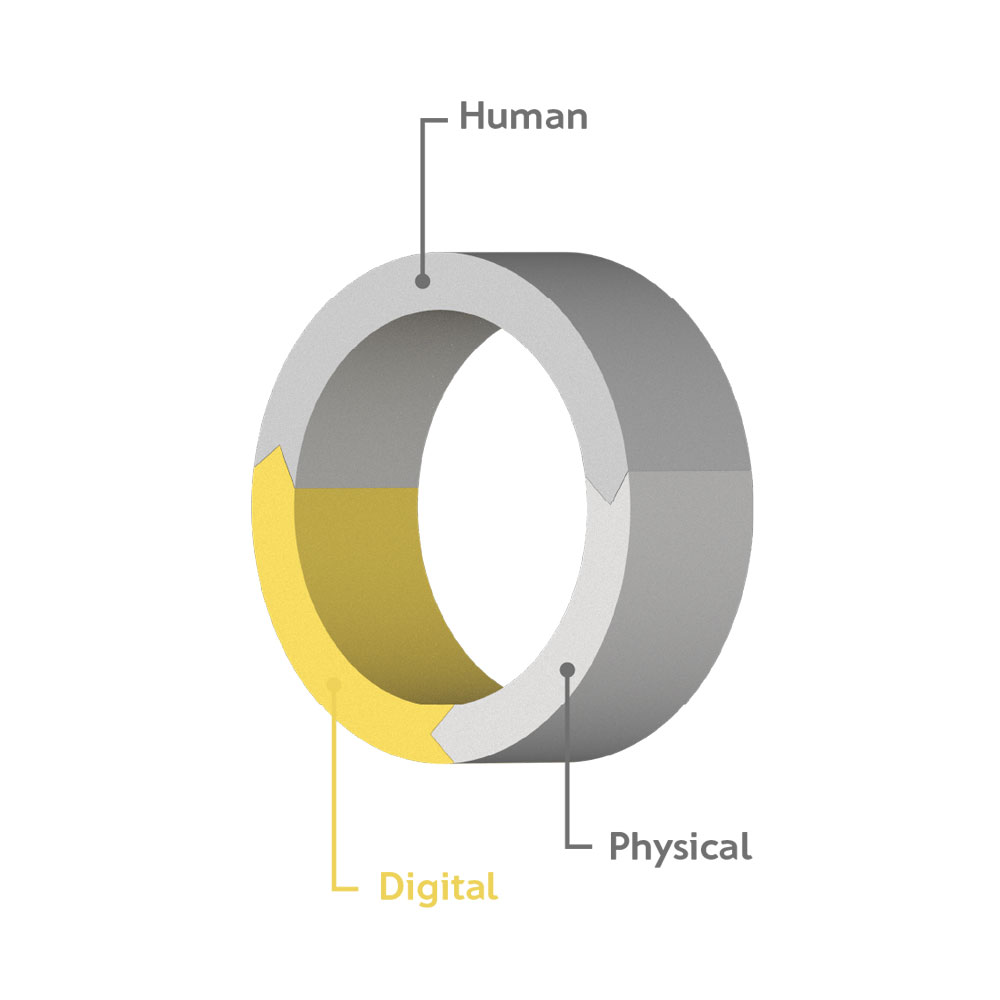Over the last few years, what employees want and expect from their employers has changed significantly, influenced by the pandemic, economic uncertainty and a strong labour market where the balance of power continues to rest with the employee.
As a result, it’s no longer sufficient for organisations to make incremental changes in what they offer to attract and retain talent.
It’s time for a holistic review. An EX Revolution.
- What’s the deal that you offer your candidates and employees?
- How does it differentiate you in the marketplace?
- How often do you review your proposition using feedback from current employees and external market data?
What is the role of an Employee Value Proposition (EVP) in great EX?
An Employee Value Proposition (EVP) is more than an Employer Brand.
It should set out the ‘deal’ or a set of promises about what it will be like to work for an organisation and what’s in it for the employee, covering things like culture, career progression, development, reward and benefits.
Your EVP needs to be tangible and realistic to set the expectations of candidates and employees. But it can also demonstrate your ambition in areas where you are committing to make improvements to the employee proposition in the future, e.g. if you are investing in a new learning offer or looking to set up an internal talent marketplace.
The trick is to get the balance right between reality and ambition so it feels authentic to current employees and to new joiners but also demonstrates where you are looking to make a change.
If what you say you are offering isn’t reflected in the experience people have working for your organisation, you are falling short on your promises which will impact engagement, productivity and ultimately retention, particularly in terms of first year attrition for new joiners.
Learn more about getting the balance right between your people experience and your EVP here.

What do we mean by a holistic approach to employee experience?
From an HR perspective, Employee Experience (EX) is typically understood within the framework of the employee lifecycle: ‘hire to retire’.
This includes, for example, the details of how you are recruited, performance managed, recognised and paid, your learning journey and the benefits you receive including how you are treated at key life events.
 While these factors have a huge bearing on our experience at work, we know that there are a number of other important factors at play. Whether you work from home, in an office, in a shop or in a factory, your experience of being ‘at work’ can vary day-to-day and year to year.
While these factors have a huge bearing on our experience at work, we know that there are a number of other important factors at play. Whether you work from home, in an office, in a shop or in a factory, your experience of being ‘at work’ can vary day-to-day and year to year.
If you think about what influences whether you feel you’ve had a good or a bad day at work, this could include how your boss treated you, if you had problems with technology, whether you could find some quiet space to focus, if you had benefited from some great coaching, whether you were inspired by a business leader, whether you achieved what you set out to do that day…the list goes on.
More broadly, how much we identify with the purpose of the business we work for and how connected we feel to the customer base can also be big factors in determining our experience at work.
Our view at LACE that, while a CPO or HR leader may not be functionally accountable for the full range of factors that determine the employee experience at work, they need to be obsessed with whether the experience is working. We talk a little about that in a recent blog about the ‘two hats’ of the CPO’ – which is why we are starting an EX revolution. And why we refer to the ‘holistic employee experience’.
Let us run you through our holistic employee experience model, building on the employee lifecycle.
Your human experiences
As a CPO, are you focused on ensuring your people managers are as capable as they can be? Do managers embrace their people management responsibilities or see them as a chore?

Your workplace culture, team and line manager have a significant impact on your experience at work. For example, for almost 70% of people, their manager has more impact on their mental health than their therapist or their doctor — and it’s equal to the impact of their partner.
In research by the CMI, only a quarter (27%) of workers describe their manager as ‘highly effective’ and, of those workers who do not rate their manager, 50% plan to leave their company in the next year. The CMI refers to ‘accidental managers’ who have taken on managerial roles without formal training and say that 82% of new managers fall into this category.
Ensuring people managers feel confident and capable in managing their team is a direct responsibility of the HR function. Setting out what is expected of people managers at every level, not just senior leaders, is a key step to achieving this, along with learning offerings that are focused on people management skills.
Similarly, promotion readiness assessments, particularly for first time managers, need to include consideration of the characteristics required to manage others well.
Your physical experiences
Does the environment your employees work in set them up for success? Do you know what your team needs from their physical workspace?

Physical environment directly impacts employee experience and varies depending on the nature of your work.
For those employees who are able to work on a hybrid basis, the office now needs to justify its existence and compete with the home attractions of no commute, cheaper food and drink, and personal flexibility.
As a result, office designs are changing to reflect what people want, whether that’s collaboration space, quiet zones, social areas, bringing the dog to work or more.
In some sectors, employees have to be at the workplace to do their jobs, including manufacturing, construction, retail and hospitality. We would argue that, while there isn’t a choice about workplace, the same level of thought needs to be given to their working environment to enable employees to do their work effectively, give them a positive experience and ensure they feel valued.
Typically, the accountability for the workplace sits with functions like Facilities Management or Operations. At LACE, we are seeing an increasing number of CPOs taking on some responsibility for the workplace. In our view, this influence needs to grow to ensure HR leaders are actively involved in the decision making processes relating to workspace design and investment given the significant impact it as to the overall experience of work.
Your digital experiences
How would your employees rate the digital tools and infrastructure they use every day? Do you know how it is impacting their productivity?
 When we discuss the digital employee experience, we refer to the tools, infrastructure, hardware and software your employees use to do their work every day.
When we discuss the digital employee experience, we refer to the tools, infrastructure, hardware and software your employees use to do their work every day.
We have all been in the situation where our PC stops working. The impact this has on our productivity, as well as our frustration levels, is huge. But more subtle factors can also influence our digital experience.
How many applications do I need to do my job and how easy are they to use? How integrated is the experience? How many pop ups and alerts do I receive every day that may distract me from focusing on my work?
In a hybrid or remote working model, an employee’s home WiFi can have a major impact on the digital experience. Not every employee may be able to afford the fastest broadband. Some may live in areas with poor broadband infrastructure.
While HR leaders are not accountable for the technology infrastructure that drives an employee’s digital experience, it is important for them to understand the nature of the experience offered and its impact on engagement and productivity levels.
Leadership, customer centricity and brand alignment
What is the role of our leaders, brand and approach in influencing the overall employee experience?
This outer ring of our holistic model refers to the broader business context in which employees operate. All three elements have a role to play in an employee’s experience, motivation and productivity.
 Business leadership has a critical role in creating positive employee experiences. As an extension to the line manager role, what a leader stands for, how they communicate and how effective they are makes a big difference to engagement and motivation at work.
Business leadership has a critical role in creating positive employee experiences. As an extension to the line manager role, what a leader stands for, how they communicate and how effective they are makes a big difference to engagement and motivation at work.
If the purpose, values and brand of your organisation align well with those of your employees, this can be a powerful factor in driving business success. Employees are increasingly influenced by purpose and values when choosing to join a new business.
Similarly, the extent to which employees make the connection between their role and the end customer can drive great engagement and performance at work. We know there is a direct correlation between employee experience and customer experience. If employees are connected to and enjoy the work they are doing, they will have a more positive experience at work and, in turn, customer experience also improves.
During this burst we will hear more about this from our partners at Engage who have a strong focus on leadership and its impact on business performance.
Over the next few weeks, we will be exploring the details of our holistic employee experience model and getting to the roots of how HR functions can be more holistic in their EX approach – sign up to the series below to stay in the loop.






